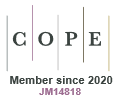Modelling heatwaves in viticultural regions of southeastern Australia
W.J. Grace, V.O. Sadras and P.T. Hayman
Australian Meteorological and Oceanographic Journal
58(4) 249 - 262
Published: 2009
Abstract
The production of quality wine grapes is sensitive to heatwaves, especially at key phenostages such as flowering and ripening. Climatological models of heatwaves with application in viticulture need to account for (a) a range of meteorological variables, (b) intensity, (c) duration and (d) timing of events. The meteorological variable most commonly associated with heatwaves is maximum temperature; however, high minimum temperatures associated with heatwaves are also relevant for viticulture. Intensity should be expressible as either exceeding a categorical threshold such as 35°C or a relative threshold such as the 90th percentile. In addition to the chance of heatwaves of a given intensity and duration for the growing season (September to April), viticulturists are interested in monthly and fortnightly windows to account for the timing of critical phenostages. The model presented here is an attempt to meet these four requirements. The model is stochastic and incorporates seasonality and daily persistence of temperature through a Markov process and implies that frequency (or the return period) of heatwaves decreases (increases) geometrically with each additional day of duration. The final model is expressed as a simple equation involving a single location-specific parameter, M, which relates to the maritime influence. The model was tested over the viticultural regions of southeastern Australia by comparison with observed data, and by assessing the physical and climatological meaning of parameter M. Cross-validated model estimates of annual frequency of heatwaves were in good agreement with observations. The parameter M proved robust and physically meaningful: it is location-specific, its isopleths have the qualitative impression of sea-breeze or maritime influence and it is quantitatively related to the skewness of the summertime maximum temperature distribution.https://doi.org/10.1071/ES09033
© Commonwealth of Australia represented by the Bureau of Meterology 2009. This is an open access article distributed under the Creative Commons Attribution-NonCommerical-NoDerivatives 4.0 International License (CC BY-NC-ND).

